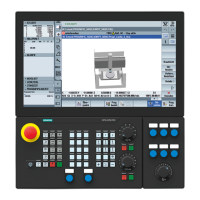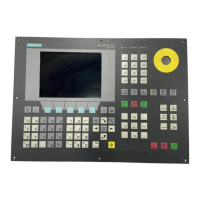Examples
# Stop all subsystems:
$ sc stop all
# Stop only HMI:
$ sc stop hmi
# Start HMI and NCK:
$ sc start hmi nck
# Start all subsystems other than NCK:
$ sc start ! nck
2.5.14 Restore
Description
Syntax: sc restore [-full|-addon|-addon+|-oem|-oem+|-user]
[-force] [-nodelete] [-update] [-restart] FILENAME
Alternative names: ---
Authorization level: user
A backup created with "sc save" can be restored to the control with "sc restore".
Principle of operation
As for "sc save", a restore is possible only from the service system or when the subsystems
are stopped. If "sc restore" reports an error, for example that the restore will cause running
subsystems to crash, you can use the "sc save" option to force the operation, as for "-force".
Normally, "sc restore" deletes the complete target area before the backup is restored (complete
CompactFlash Card for full backup, /user in user data backups). This means that no files are
subsequently available that were not included in the backup.
Archive and backup files larger than 4 GB
If a backup consisting of several archive files is to be restored with "sc restore", only the first
file of the backup must be specified in the FILENAME parameter. Once the end of the file has
been reached, other parts will be searched automatically.
Decisive when determining the continuation files is the format of the file name that was
transferred during calling, i.e. when calling "sc restore /tmp/backup.01of02.tgz", and after
reaching the end of "/tmp/backup.01of02.tgz", a search is next made for the "/tmp/backup.
02of02.tgz" file. When calling "sc restore /tmp/backup.1of2.tgz", the "/tmp/backup.2of2.tgz file
is expected correspondingly as a second part of the backup.
Configuring the system
2.5 Description of the actions
NCU operating system
Commissioning Manual, 12/2017, 6FC5397-1DP40-6BA1 53

